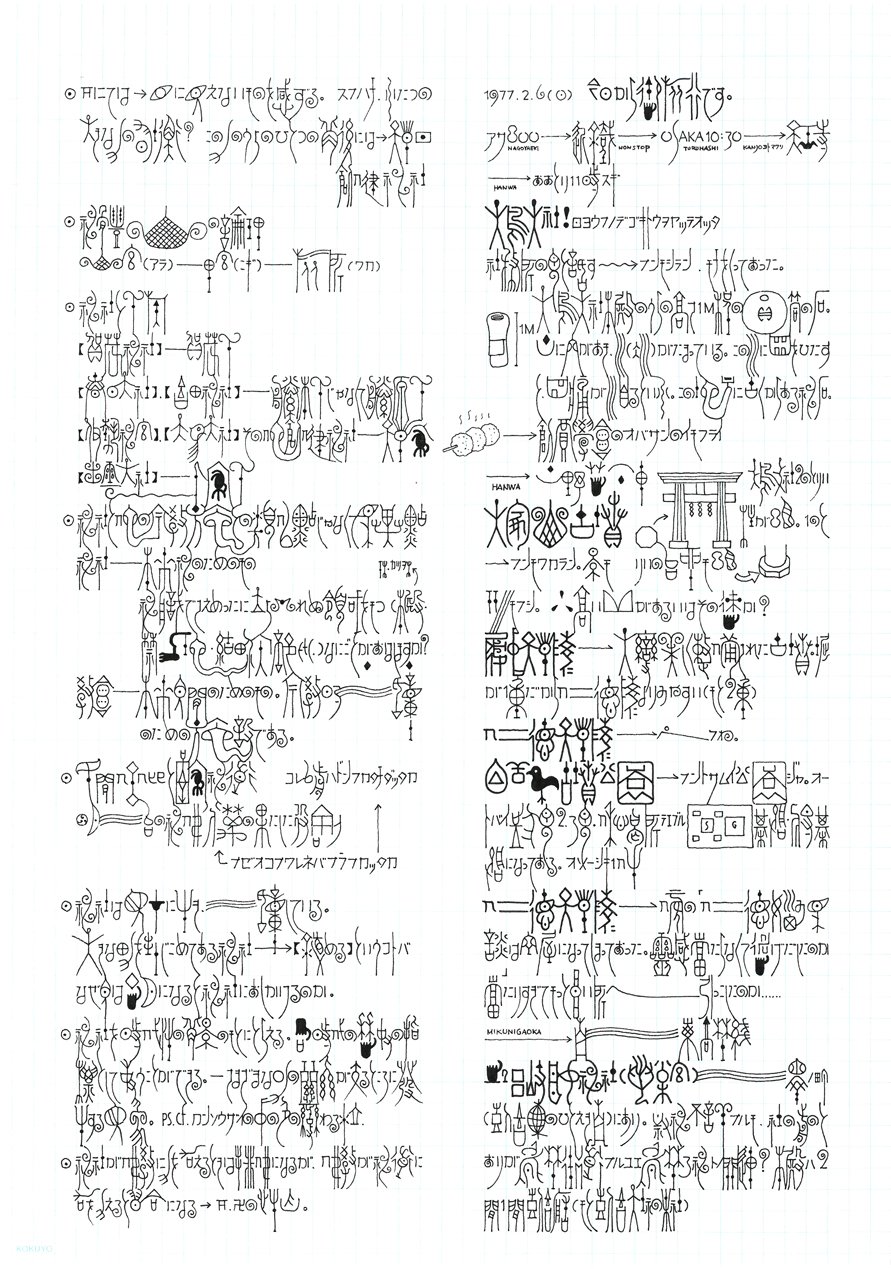




紙にインク, 210mm × 297mm, 2002年 / Ink on Paper, 210mm × 297mm, 2002.
神体山の論理
山自体が神そのもの。これを神体山という。日本の神社にふつうに見られる聖なる三位一体。山に神の荒御霊が降臨し、それを山麓の里宮に迎える。一旦里宮に鎮座した神を神輿に載せて、稲作地帯の真ん中にある水田のお旅所に担いでいき、そこで祭りを行う。これにより、神は自らを生み、その生命力は甦る。神と人との交流は、山、里、田の距離の移動が神自身の生まれ変わりに翻訳され、それが、毎年新たな実を結ぶ稲作農業をドライブしていくエンジンとなる。この三者、三つのプロセスは、どれを欠いても成り立たず、日本人の生命観や季節の移り変わり、そして聖なるもの、清きものに対する意識は、年々更新され、受け継がれてこの国土と山河、さらに文化を形成してきた。
このような日本の山河と人の生活にとって、街は異質である。街の神は農耕を知らず、季節とも無縁だ。街の神は文化の上澄みを好むがゆえに文化から切り離される。根のない人の思いは抽象へと向い、山河と切り離された意識の群れは妄想の山を築いて倦まない。街の神体山は虚飾の果になるがゆえに透明で純粋である。
The Logic of the mountain as the body of God
The body of the mountain is God itself. Mountain like this is called Shin-tai-zan (the Mountain as the Body of God). There is the typical trinity in the Shinto shrine in Japan. The first shrine is in the mountain, the second is at the foot of the mountain, and the third is at the rice farm. The ferocious (raw) spirit of God is residing in the mountain first. People go to mountain to welcome the spirit, and enshrine that spirit in the Shrine at the foot of the mountain. And more, people put the spirit on the Omikoshi (a vehicle of God) , and they carry that Omikoshi to the Shrine in their farm. This act of people means that. At first God's spirit is raw, and people can not use that as they want. So, they pull down the God's raw spirit from mountain, and socializes that to adapt for their rice production process. But the spirit needs to be active at just their rice farm, so people pick up the spirit on the Omikoshi, and take him to the Shrine which located at their farm. At the Shrine in their farm, people enshrine the spirit and ask him for rich gain of the year. The spirit produces oneself in response to their prayer newly at this place and revives as new God. In this way, as for the interchange with God and the person, the distance movement from the mountain to the village and from the village to the farm is translated into the reincarnation of God. And this act becomes the engine to drive rice agriculture to reproduce newly every year. God in mountain, in the village, and at the rice field. These three processes don't go well if lacking one of them. By this trinity, the viewpoint for the life of Japanese, the sharp sense for the change of the seasons, the consciousness for a clean and sacred thing, are reborn year by year, and are inherited from generations to generations, and made the landscape of the mountains and rivers, and also formed the culture of this country.
For such Japanese landscapes and the life of the people, the city is heterogeneous. God of the city does not know the farming and is unrelated to seasons. God of the city is separated from the real culture because he likes top clear liquid of the culture. The thought of the people who lost their roots goes to the abstraction, and separated consciousness of people are assembled and build huge mountain of the delusions and not get tired. Worship mountains of city are pure with transparence because they were made with shows and displays of ostentations.